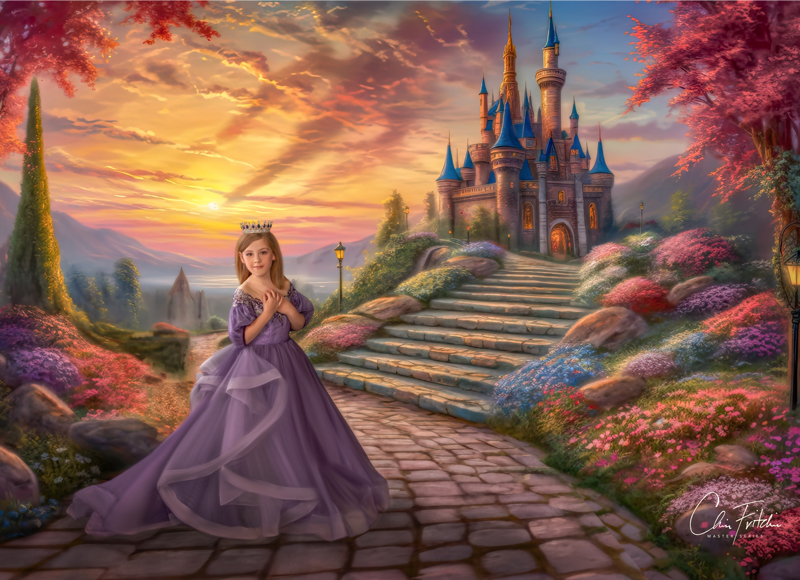By Chris Fritchie
Artificial intelligence (AI) has rapidly evolved and made significant contributions to various industries, including the field of photography. From chatbots to image generation, AI has opened up new avenues for photographers to create content and to enhance their artistic capabilities. In short, this revolutionary technology empowers machines to learn, reason, and solve intricate problems… much like humans. Even Photoshop has been leveraging AI for quite some time now. However, the integration of AI in photography is not without controversy. When used correctly alongside traditional techniques, advanced AI tools present photographers with endless possibilities for creative expression beyond what most could imagine in years past while streamlining complicated processes that business owners no longer need to worry about. The debate still rages on about its use in professional circles, but the potential for innovation in a digital era where almost everything is possible can’t be ignored.
Text to image AI makes it possible to transform written descriptions into visuals effortlessly. On the other hand, ChatGPT, created by OpenAI, makes content creation more manageable through its conversational abilities. The key consideration when looking at how much creativity we can unlock using Artificial Intelligence should always be ethical practice. Maintaining transparency around which parts were facilitated by AI versus artist driven efforts becomes pivotal in determining artistic integrity.
By including AI processes across their work methods, photographers have an opportunity to simplify content creation while enhancing marketing campaigns significantly using OpenAI’s ChatGPT language model. This platform generates compelling messaging across multiple platforms quickly and efficiently that captivate audiences’ attention.
LeadSavage is another photographer-developed, tailor-made marketing tool used by professional photographers. It is designed to simplify and streamline promotional endeavors and integrates all content generated from ChatGPT into complete marketing programs that cover multiple aspects such as drip emails, funnels, social media ads, SMSs as well as eBooks efficiently.
Using AI-powered tools such as ChatGPT integrated with LeadSavage, our studio can better focus on our artistic abilities while maintaining optimal efficiency in growing our business and meeting clients’ requirements. Our proficiency in AI technology has resulted in creative images that showcase the integration between traditional analog photography techniques and modern computational tools.
“Your Fairy GodMother” (on the title page) is the name of a couture dress rental company we collaborated with to turn a young girl’s princess dream into reality using an AI-generated scene creation and digital painting. It demonstrates how AI can expand the boundaries of artistic expression.
Another example involved the Mayor of McKinney, Texas, and his wife who wanted to capture their unique spirits and love for music. The mayor played guitar, and his wife is a professional blues singer. With the aid of AI, we created custom backgrounds and elements that reflected the couple’s mantra, resulting in an image that encapsulated their essence and celebrated their connection.
These images demonstrate how advanced technology can expand creative boundaries beyond what we could imagine possible. Even so, despite the excitement of fusing tech and art, it is crucial to consider ethical concerns when incorporating AI into photography projects. Experts speculate that using AI may blur the distinction between originality and artwork enhanced by computers. It is imperative for photographers who want to employ these techniques to explicitly state which elements are artificially generated in order to safeguard the industry’s integrity.
While some argue that AI steals from artists, the text-to-image technology argues that fair use and learning are fundamental for algorithms’ ability to create art. Like students who take inspiration from art, AI learns by analyzing data and generating outputs inspired by observed patterns. The aim isn’t to duplicate but to foster original and like-minded creations that encourage imaginative exploration and innovation.
It goes without saying, yet bears repeating: ethical considerations must remain a top priority during implementation for greater transparency within creative communities. The fusion of AI with human creativity can help photographers redefine visual storytelling and take their skills to the next level. AI technology has expanded creative horizons for professional photography, offering innovative solutions such as text-to-image AI or ChatGPT that allow practitioners to create unparalleled content while optimizing marketing strategies and improving customer experiences.
However, it is essential to have a responsible discussion about ethical considerations surrounding its deployment since it could significantly affect artistic integrity in the visual arts arena. Therefore, distinguishing unequivocally between artist-led work and AI-influenced work is crucial in maintaining an optimal harmony between human innovation and technological advancements while also protecting copyright laws for artists as we venture into uncharted territories in our digital era. New techniques in photography provide exciting opportunities for pushing beyond the limitations of human abilities.
To navigate the swiftly-changing technological landscape, education resources become increasingly vital for professionals in this sector. These advancements transform our visual experiences through programmed algorithms that create stunning images, effortlessly and on-demand. Those proficient in using such programs hold an advantage for creating even more astonishing visuals.
Maintaining artistic integrity while expanding boundaries is a delicate balance artists strive to achieve. However, with AI’s growing presence in photography, this balance becomes increasingly difficult to maintain. Recent US copyright laws protect only AI-created art that has “human authorship,” leaving non-human-generated art unprotected by current legislation.
Adapting to new technologies is crucial for artists in today’s fast-paced world of photography, even if that means incorporating text-to-image AI and ChatGPT tools into their creative processes. While it may seem overwhelming at first glance, it’s important to keep up with these advancements to remain competitive in the industry. However, it’s equally important that ethical concerns guide these developments’ forefronts while transparent practices are implemented within the community itself.
